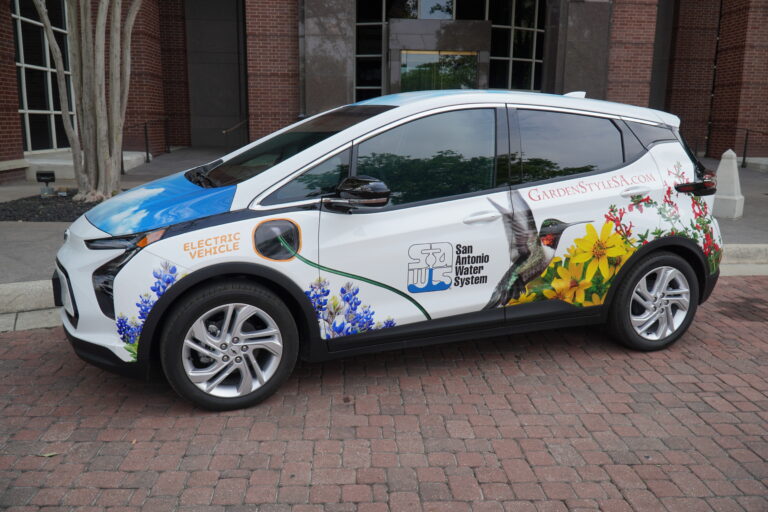Background
In 2023, SAWS made an operational shift toward a phased fleet electrification strategy to meet our sustainability goals to reduce carbon emissions while meeting the needs of our user groups. By transitioning to electric vehicles (EVs), SAWS will play a large role in helping the City of San Antonio meet its Climate Action Plan goals. EVs produce zero tailpipe emissions, which reduces the release of harmful pollutants into the atmosphere during both idling and general operation.
Project Description
In 2024, SAWS made significant progress toward the expansion of electric vehicles and planning of electric vehicle infrastructure by implementing the following:
 Added 20 light duty electric vehicles to the fleet.
Added 20 light duty electric vehicles to the fleet.
- 2 Ford E-Transit Vans
- 9 Chevrolet Bolt Sedans
- 9 Ford F-150 Lightnings
- Implemented 13 Level 2 charging stations at the Northeast Operations Center in November 2024. Fleet acquired three more Ford F-150 Lightnings to be based at the new facility, which will bring the total EV count to 23 during the first quarter of 2025.
- Development of the Headquarters (HQ) electric vehicle charging station Capital Improvement Project (CIP), currently at 100% design and estimated to go to the board in the first quarter of 2025. The project involves necessary electrical infrastructure upgrades through CPSE, including two transformers and switchboards. Upon completion, this project will provide fifty (50) Level 2 charging stations, with the capacity to expand to 100 in the future. The project is estimated to be completed in the third quarter of 2026, with an estimated construction cost of $2.7 M.
- The inclusion of six Level 2 charging stations as part of the Leon Creek facilities improvement project. The project will include electrical infrastructure upgrades through CPSE, with an estimated implementation during the first quarter of 2026.
- An electrical infrastructure assessment of five SAWS service centers was completed in the first quarter of 2025 through our SAWS Engineering department. The assessment will assist SAWS in the future acquisition of electric vehicles and charging station infrastructure.
Notes
Implementing light duty electric vehicles has proven to be successful in decreasing operational and maintenance costs, while meeting the needs of our user groups. SAWS will continue to monitor electric vehicle market conditions moving forward and will adjust planning efforts accordingly. It is expected that SAWS and CPSE will continue to work closely to plan for needed charging infrastructure.